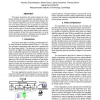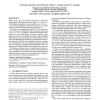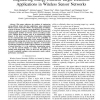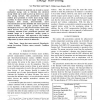901 search results - page 77 / 181 » Minimum power configuration in wireless sensor networks |
COMCOM
2006
13 years 8 months ago
2006
Wireless sensor networks are poised to revolutionize our abilities in sensing and controlling our environment. Power conservation is a primary research concern for these networks....
VLSID
1999
IEEE
14 years 1 months ago
1999
IEEE
This paper describes the system design of a lowpower wireless camera. A system level approach is used to reduce energy dissipation and maximize battery lifetime. System properties...
MOBIHOC
2005
ACM
14 years 8 months ago
2005
ACM
Wireless Sensor and Actor Networks (WSANs) are composed of a large number of heterogeneous nodes called sensors and actors. The collaborative operation of sensors enables the dist...
PERCOM
2010
ACM
13 years 10 months ago
2010
ACM
This paper addresses the problem of engineering energy-efficient target detection applications using unattended Wireless Sensor Networks (WSNs) for long-lasting surveillance of are...
IJISTA
2010
13 years 7 months ago
2010
- Piezoelectric materials can be used to convert mechanical energy, such as vibration into electrical energy which can be used to power up devices in a smart dust sensing network. ...




